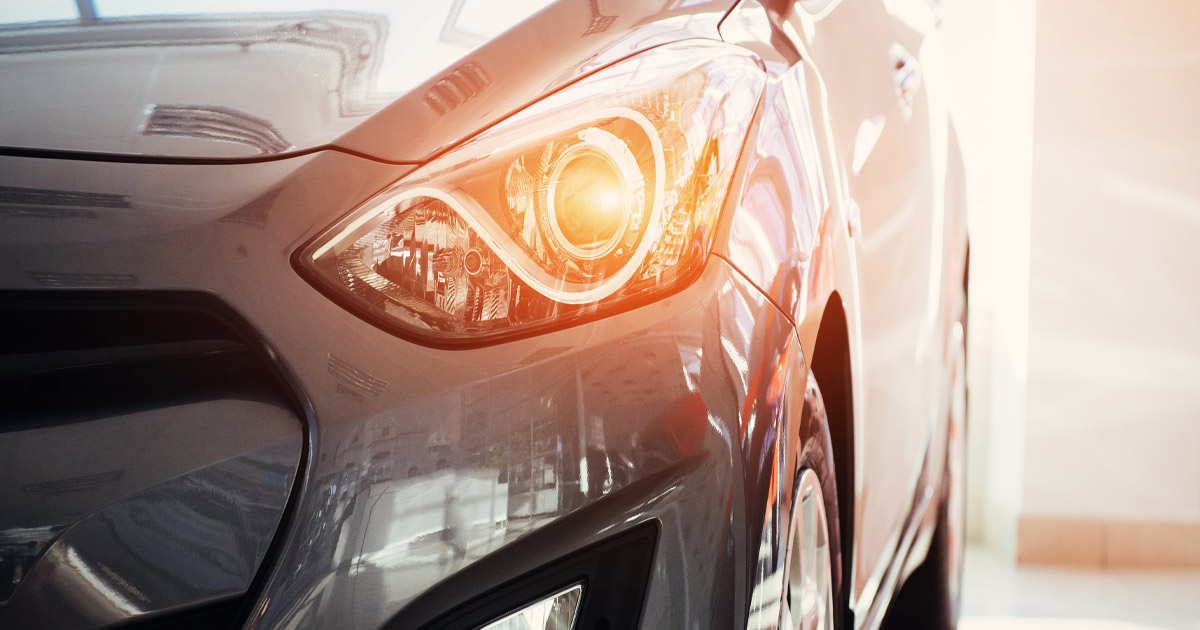
Night driving demands extra attention because of low visibility, and glare from bright or misaligned headlights makes it even more hazardous. This intense light can temporarily blind a driver, slow reaction time, and interfere with depth perception, raising the risk of serious car accidents.
Glare can result from high beams used improperly, headlights that are angled incorrectly, or overly bright bulbs. Even properly adjusted lights may produce glare in certain conditions, such as when they reflect off wet pavement or road signs, snowbanks, foggy air, metallic objects, or shiny roadside surfaces at night.
At night, the human eye is adapted to low light, which makes sudden brightness more disruptive. When glare strikes, it can overwhelm the eye’s ability to adjust, creating a momentary loss of visibility that leaves drivers vulnerable to things that are already harder to see, like pedestrians, obstacles, road markings, and oncoming vehicles.
Temporary blindness from glare can last several seconds. During this time, a driver may be unable to see brake lights, pedestrians, roadway obstacles, traffic signals, or approaching vehicles. Even a brief delay in perception can make it impossible to stop, change lanes, or maneuver safely to avoid a collision.
Yes. Excessive brightness can flatten visual contrast, making it harder to judge distances between vehicles or estimate the position of curves and intersections. This can lead to misjudged passing attempts, abrupt braking, or collisions in intersections.
Age-related changes in the eyes, such as cataracts or reduced pupil flexibility, can make it harder to recover from sudden brightness. Older drivers may experience longer periods of impaired vision after encountering high-beam glare.
Rain, fog, and snow can all intensify glare by reflecting light back toward drivers. Wet pavement can act like a mirror, scattering headlight beams and making the road surface harder to read, while ice, sleet, and mist can further distort vision and increase difficulty in judging distances.
Glare can obscure traffic signals, stop signs, or the movement of cross traffic. When this happens at intersections, drivers may misinterpret who has the right-of-way or fail to notice other vehicles until it is too late to avoid impact.
If headlights are aimed too high, they can shine directly into the eyes of oncoming drivers, significantly increasing glare. Poorly maintained or modified lighting systems, dirt-covered lenses, and uneven vehicle suspension can further amplify brightness, creating unsafe conditions that make it difficult for drivers to judge road hazards and distances.
Yes. When vision is compromised, drivers may subconsciously steer away from the light source, which can lead to drifting into adjacent lanes or the road shoulder. This behavior can be particularly dangerous on highways or narrow roads.
You can use witness accounts, dashcam footage, and police reports, noting glare as a factor. Photographs of the other vehicle’s headlights or alignment records may help. Accident reconstruction evidence can link glare conditions to the collision, especially when supported by weather data and time-of-day documentation.
Need a legal consultation after a serious motor vehicle crash? Contact our Macon car accident lawyers at Childers & McCain, LLC. Call us today at 478-254-2007 or complete our online contact form to schedule a free consultation. Located in Macon, Georgia, we gladly serve clients in Savannah, Albany, Atlanta, Bibb County, Chatham County, Columbus, Crawford County, Oglethorpe, and Peach County.
Facing the aftermath of a serious accident can be overwhelming. Before you speak with the insurance companies, make sure you schedule a free consultation with the Macon personal injury lawyers at Childers & McCain. We can protect your rights while anticipating the insurance company’s tactics to make sure you get the full compensation you deserve. You don’t have to navigate this tough road alone – let our team of professionals help you move forward.